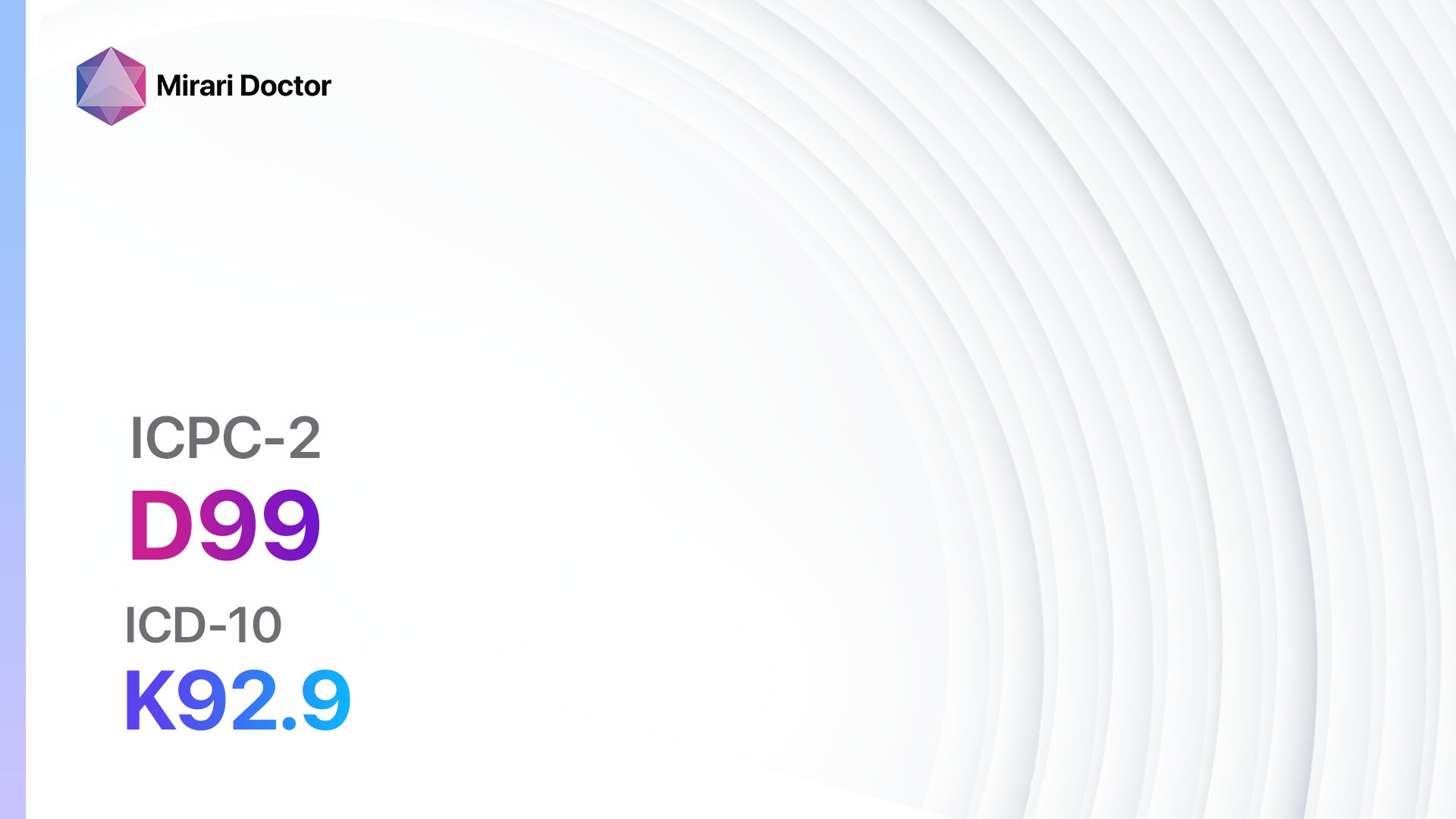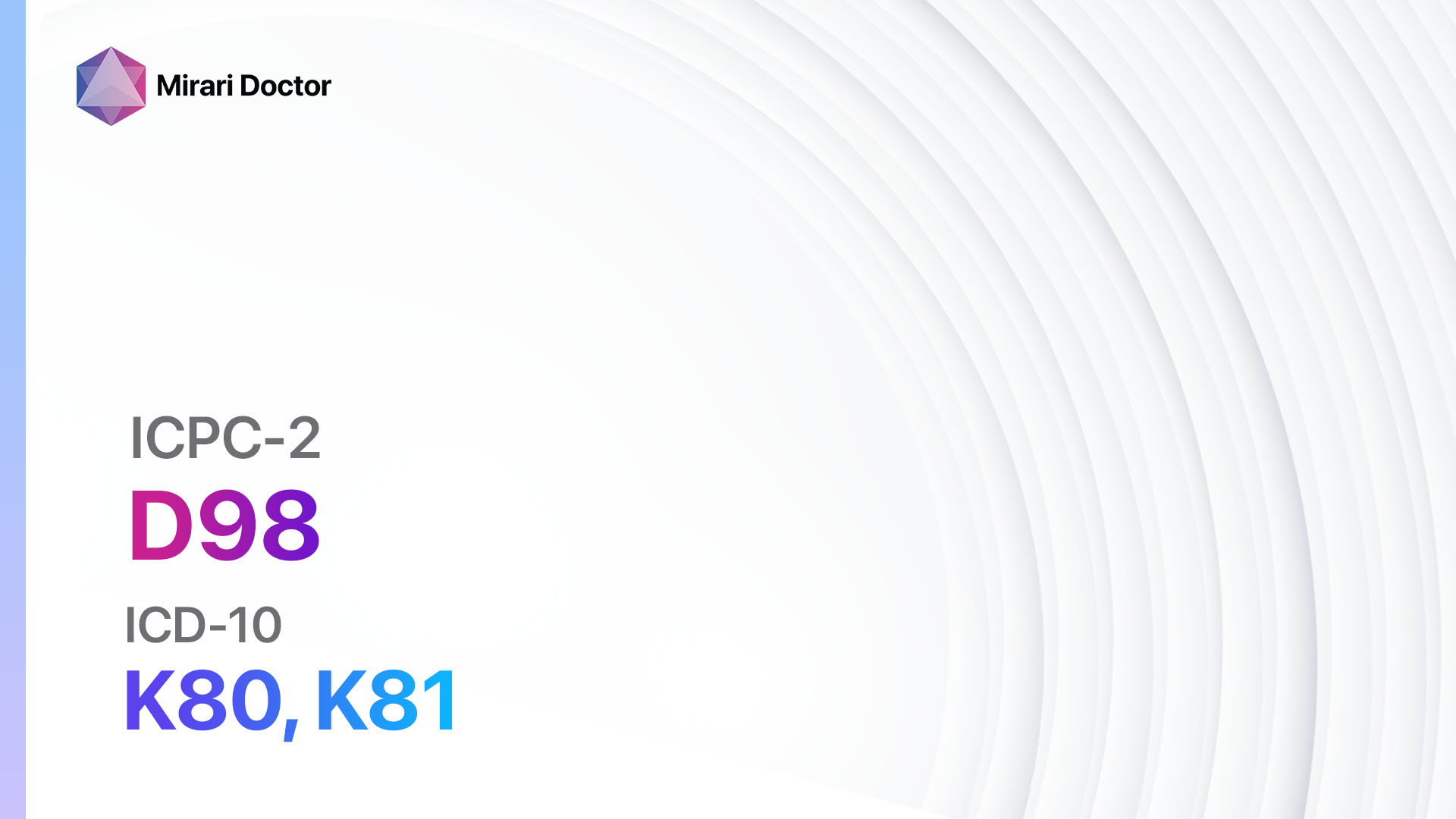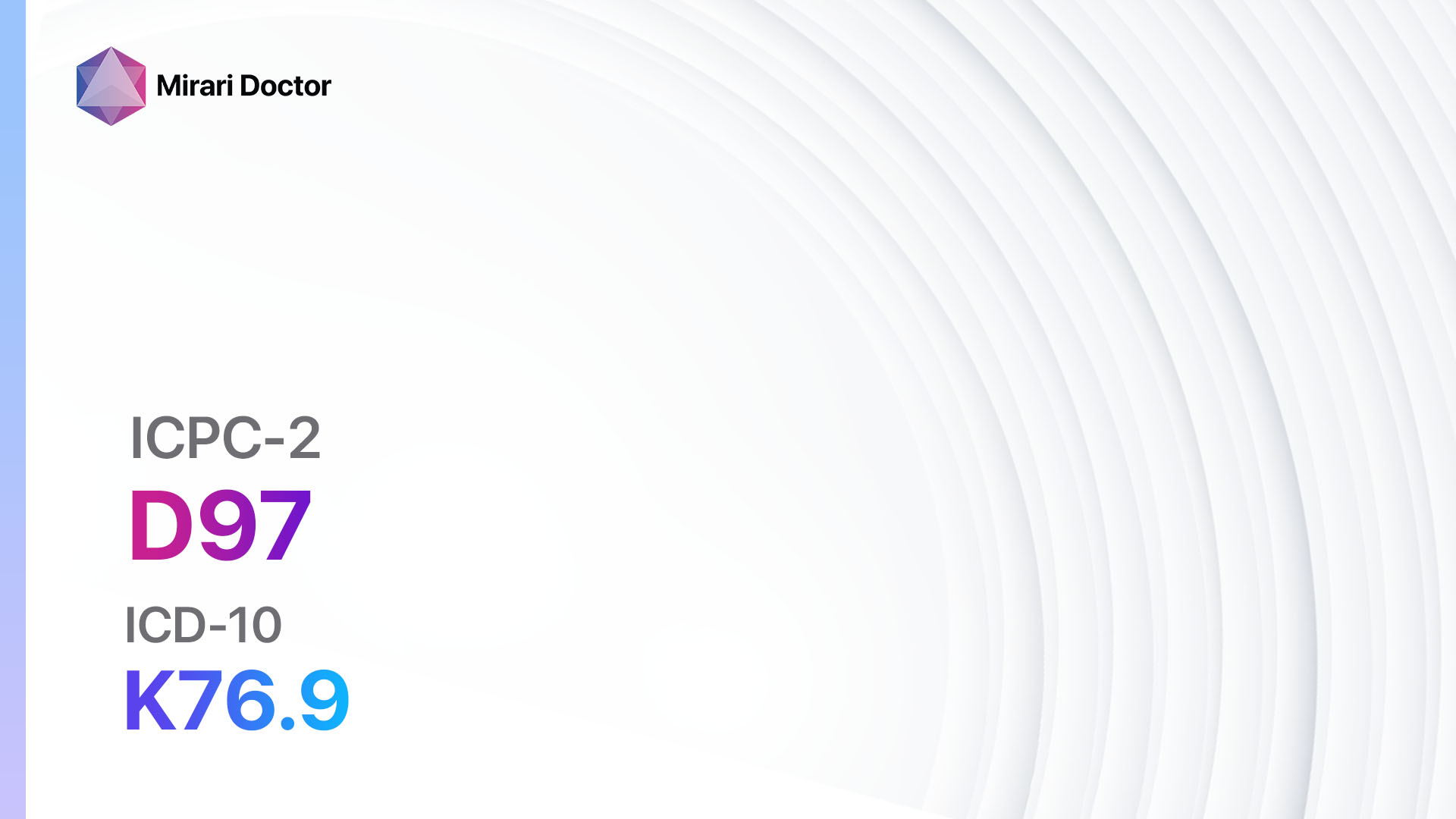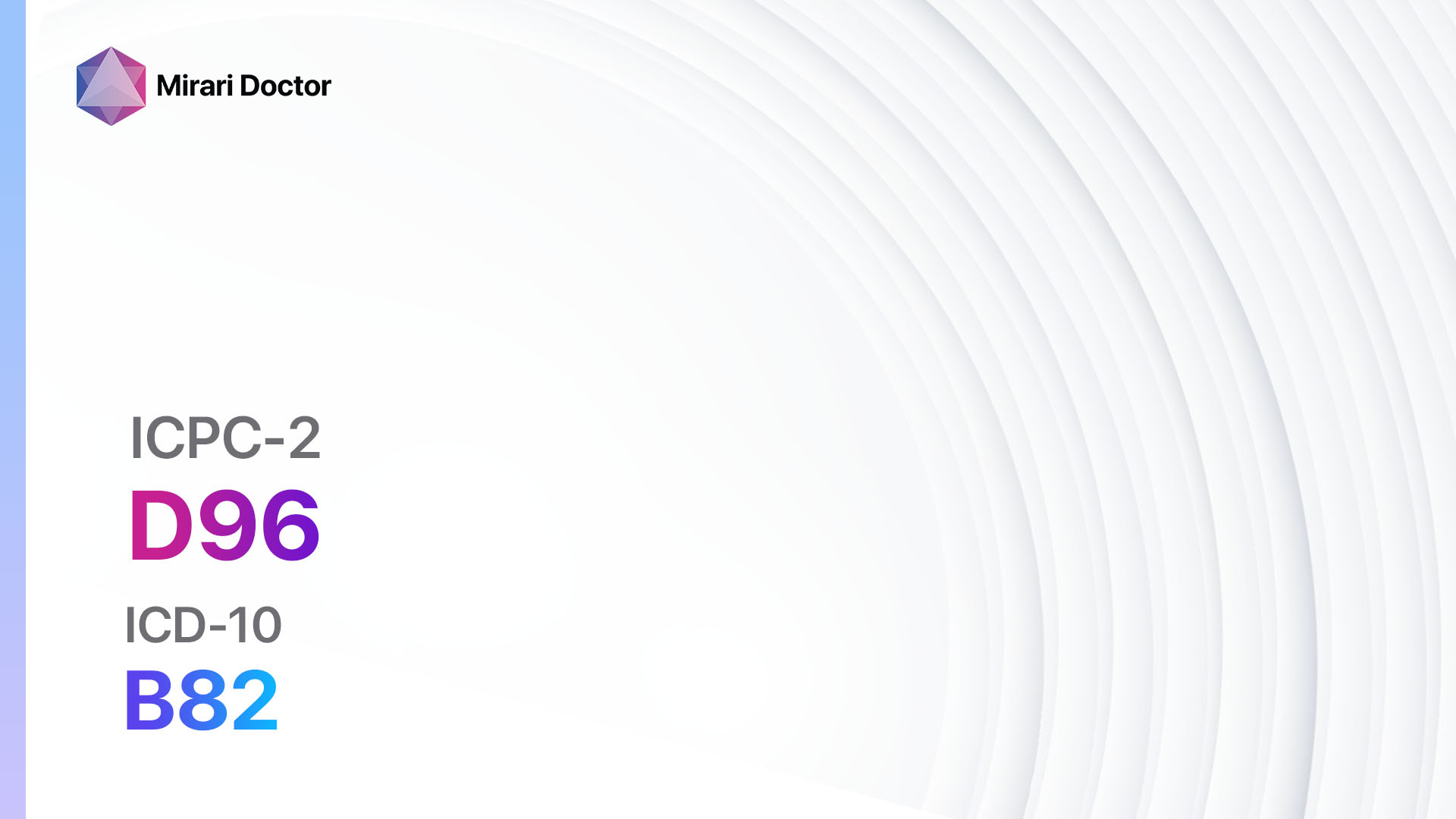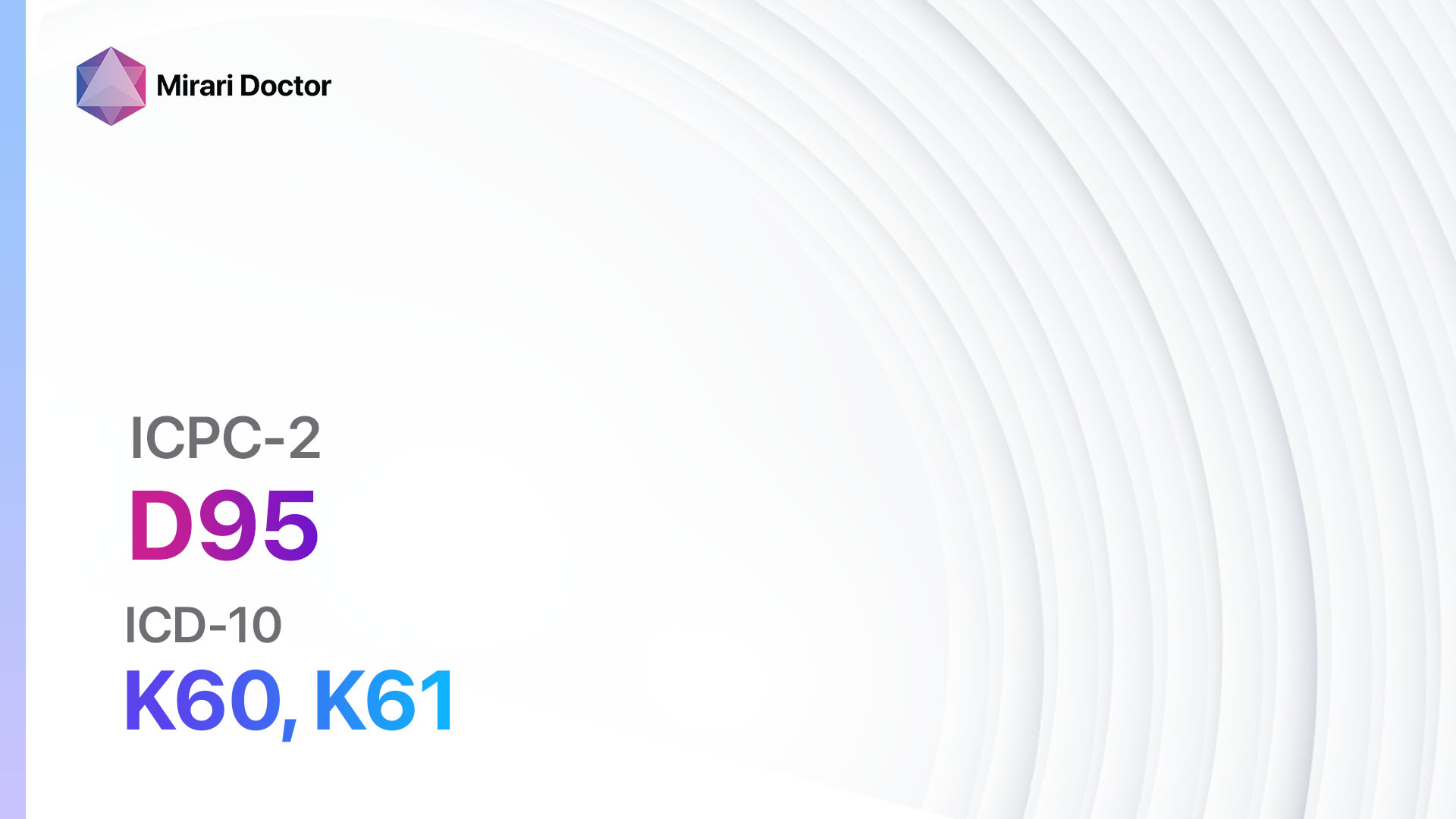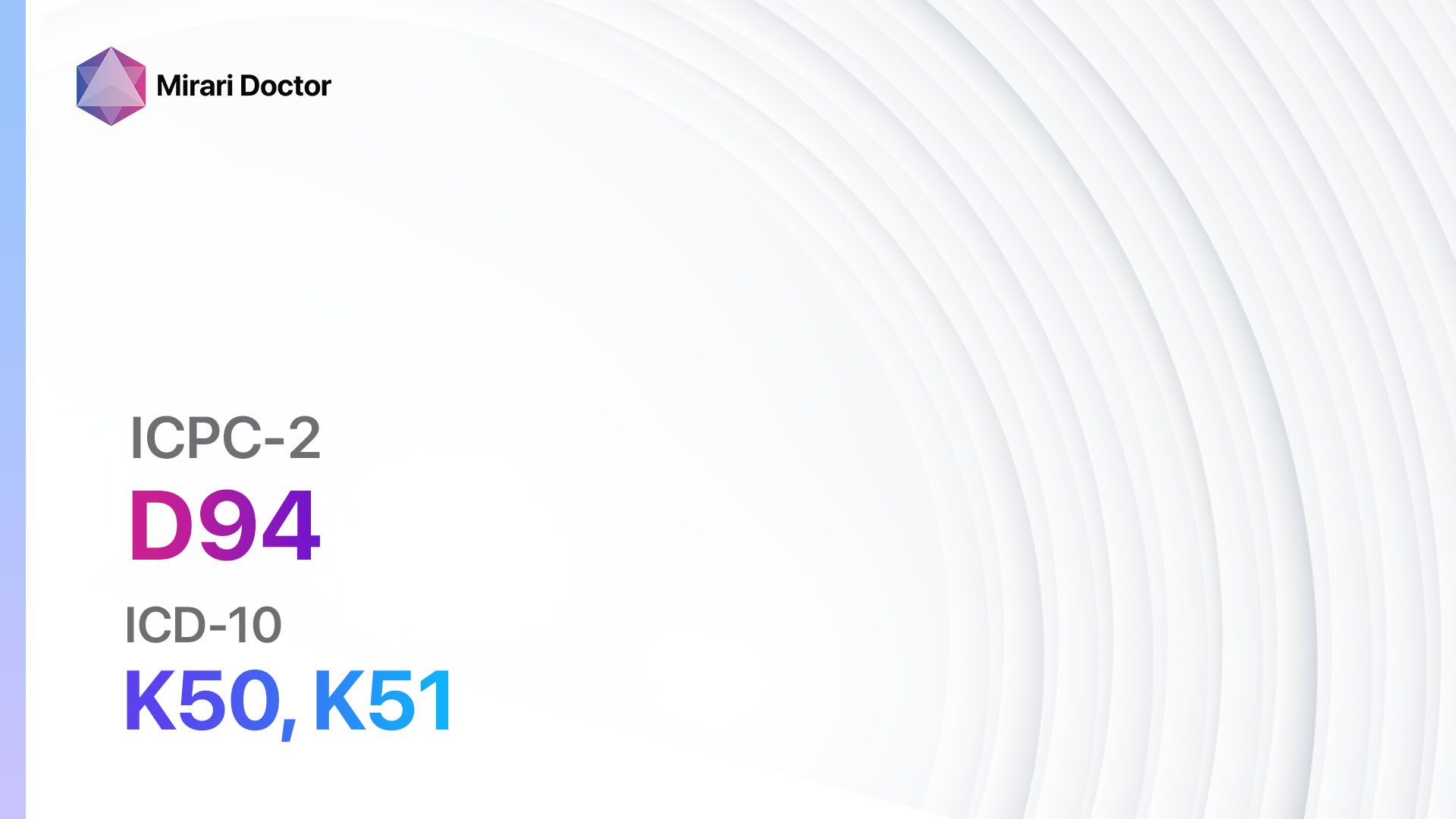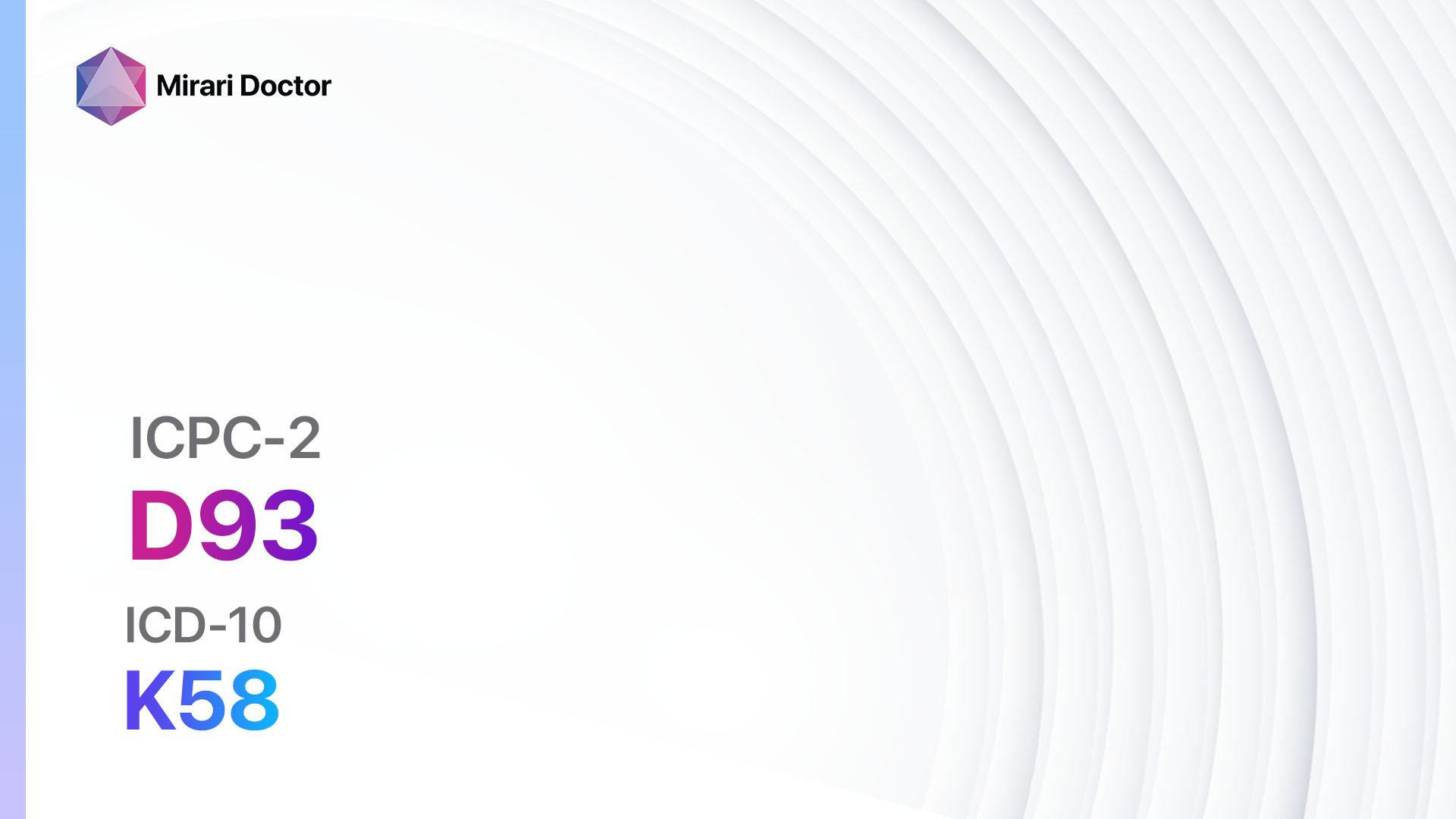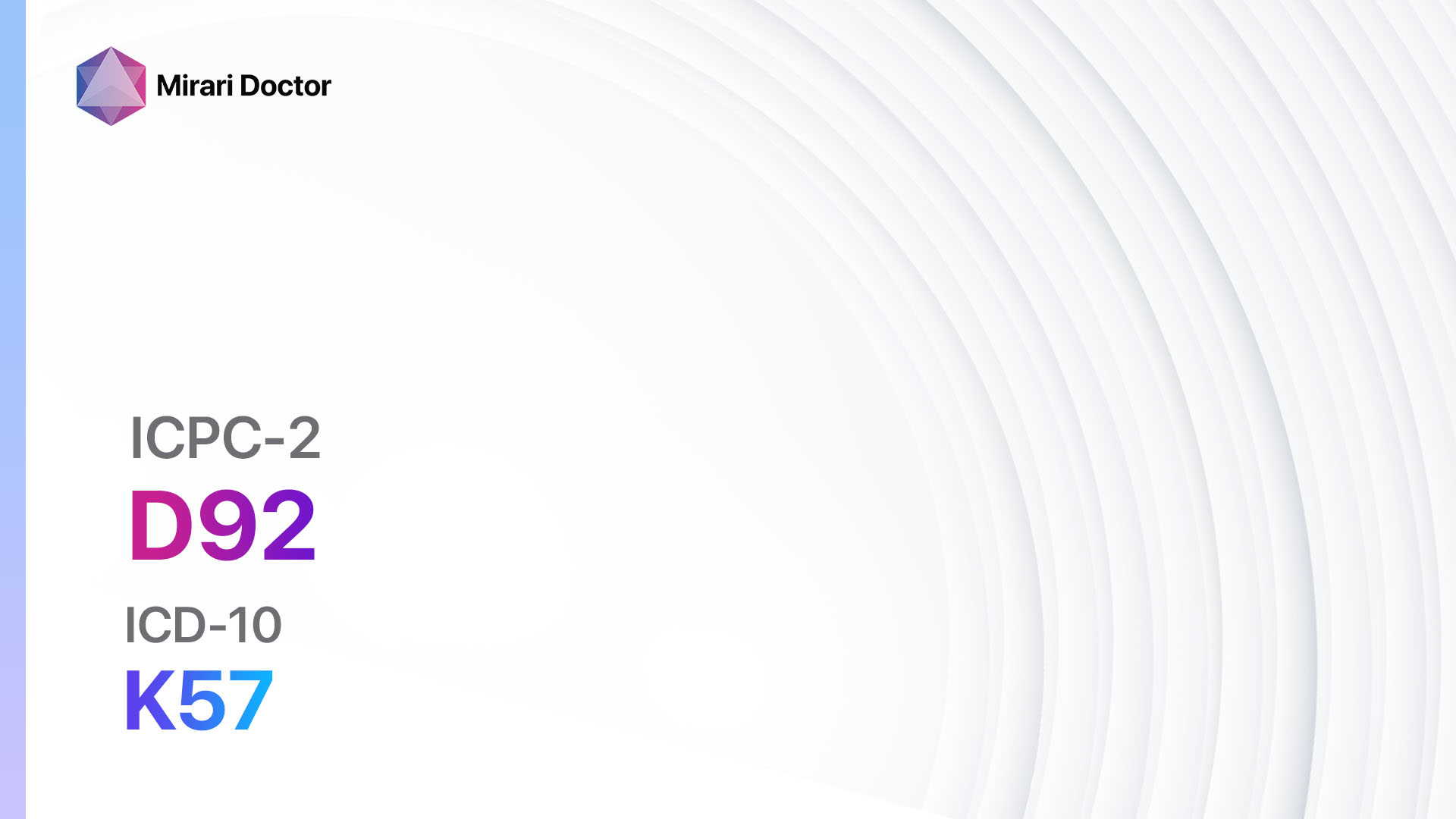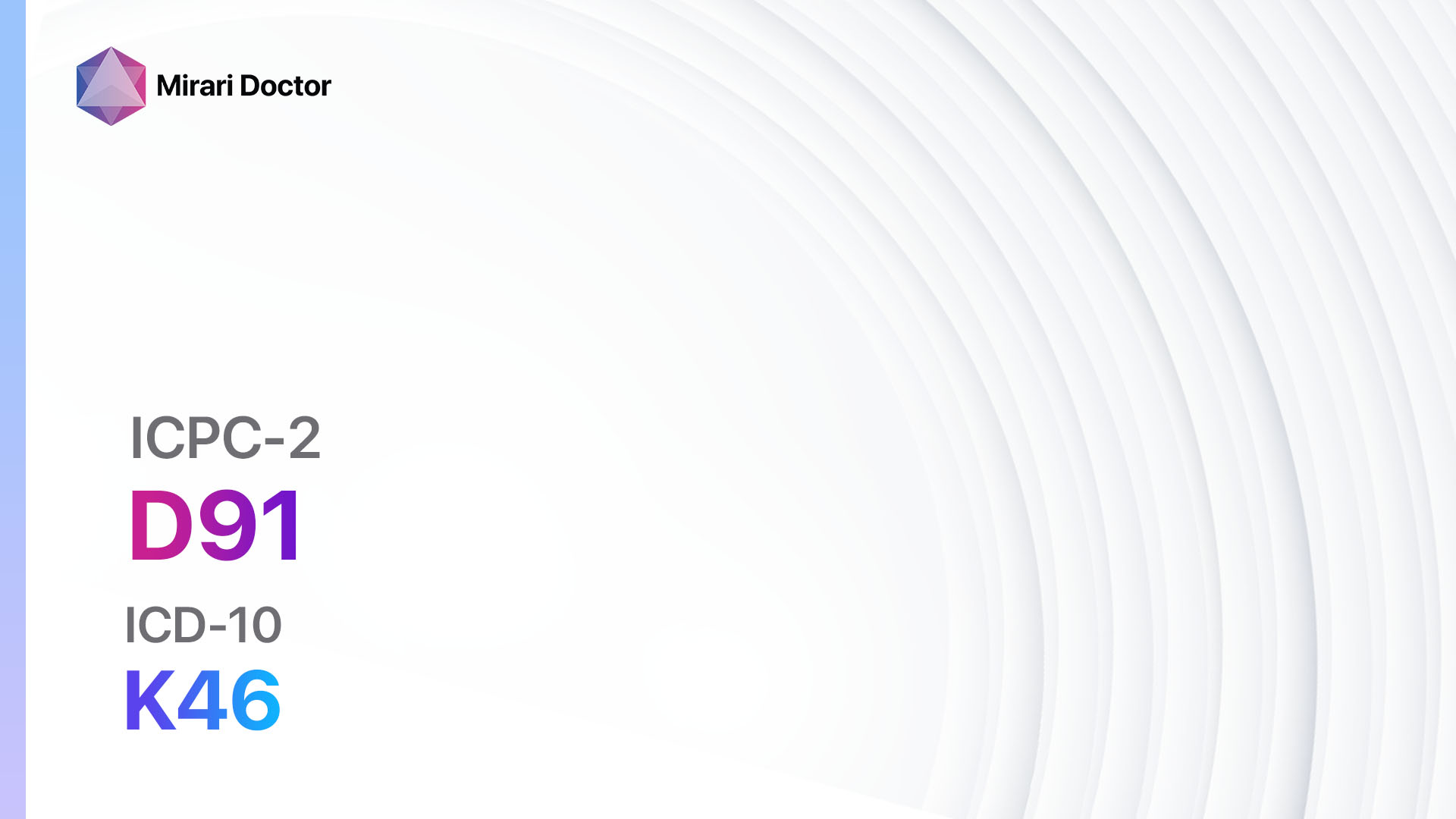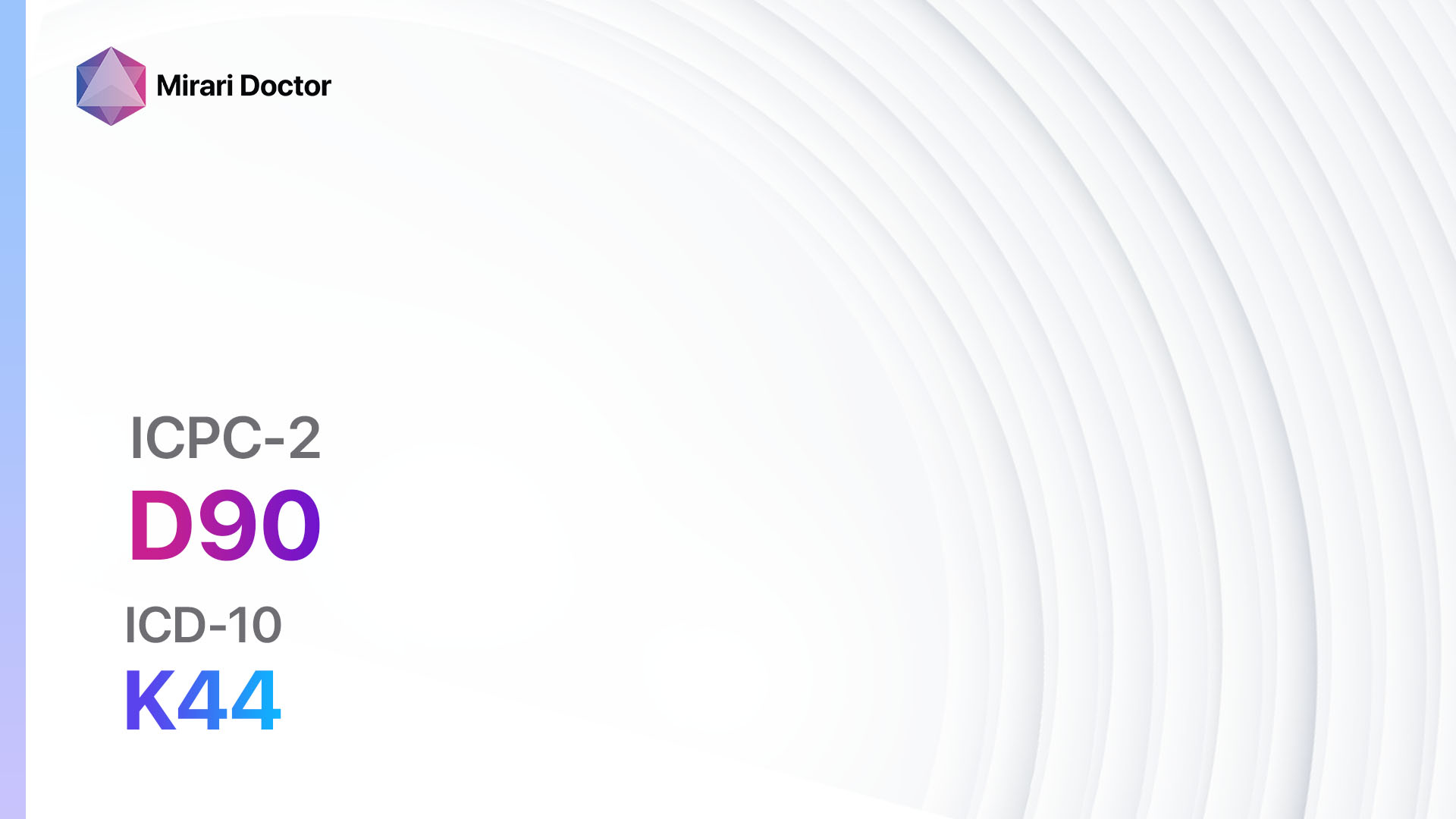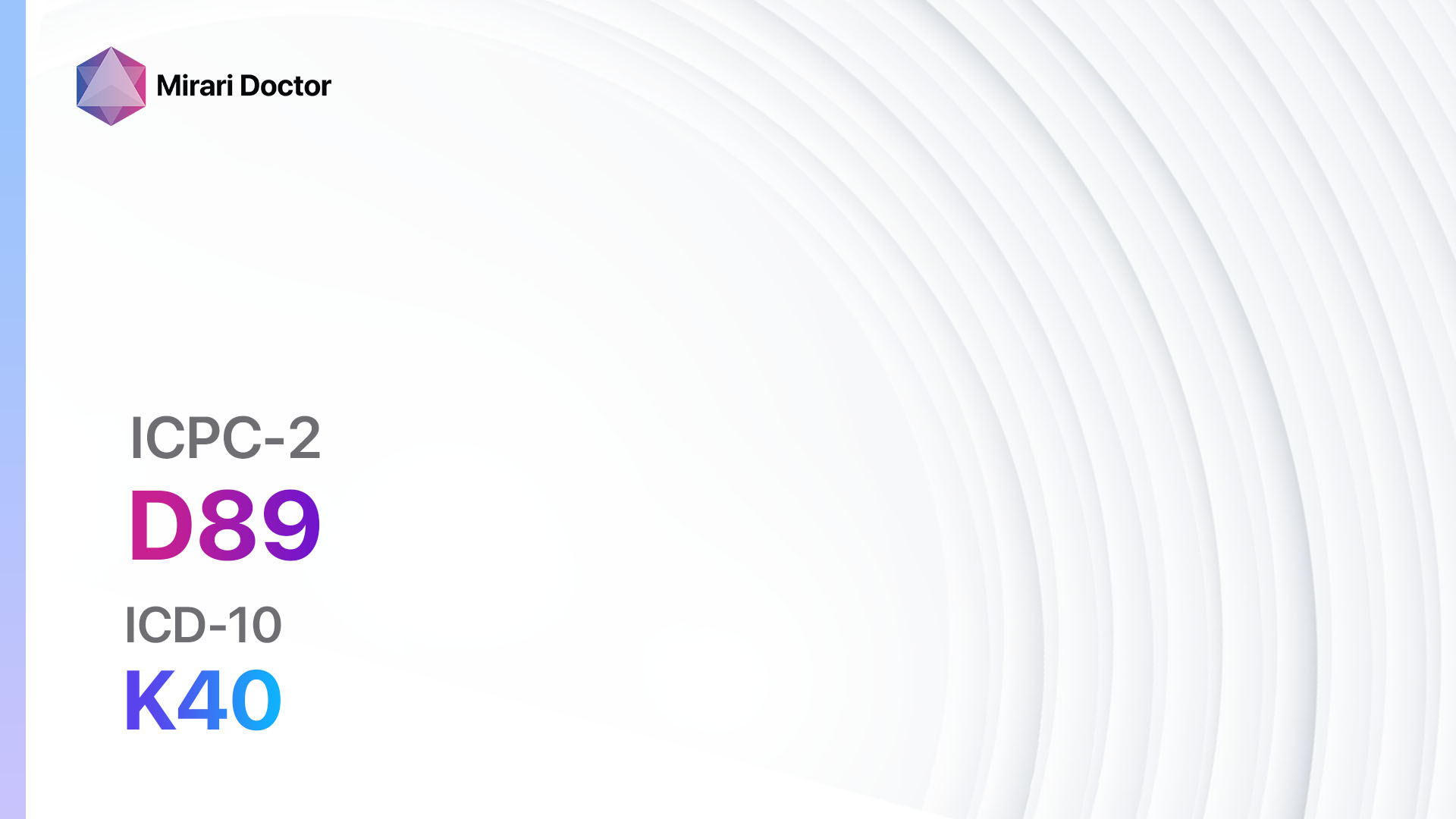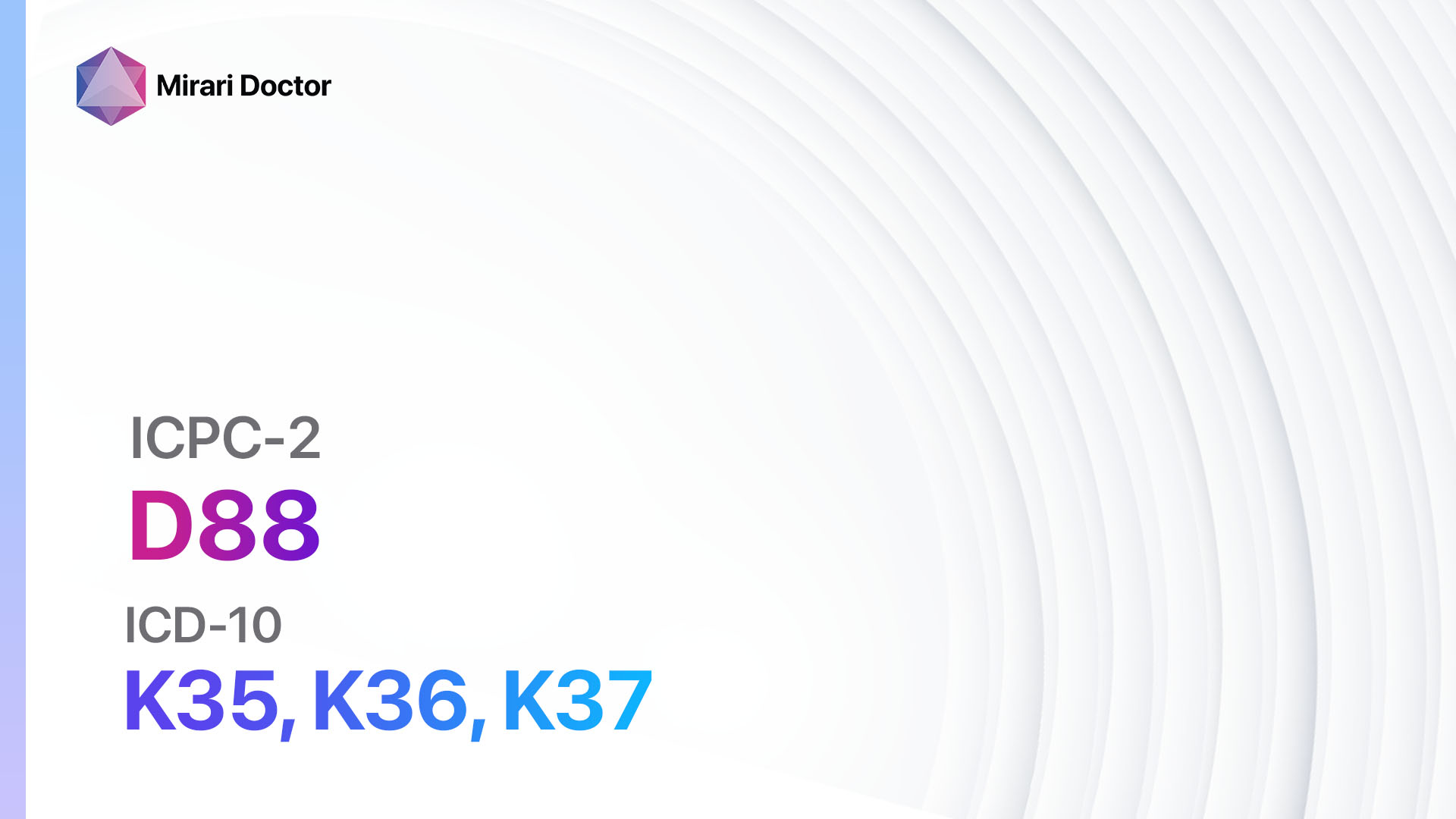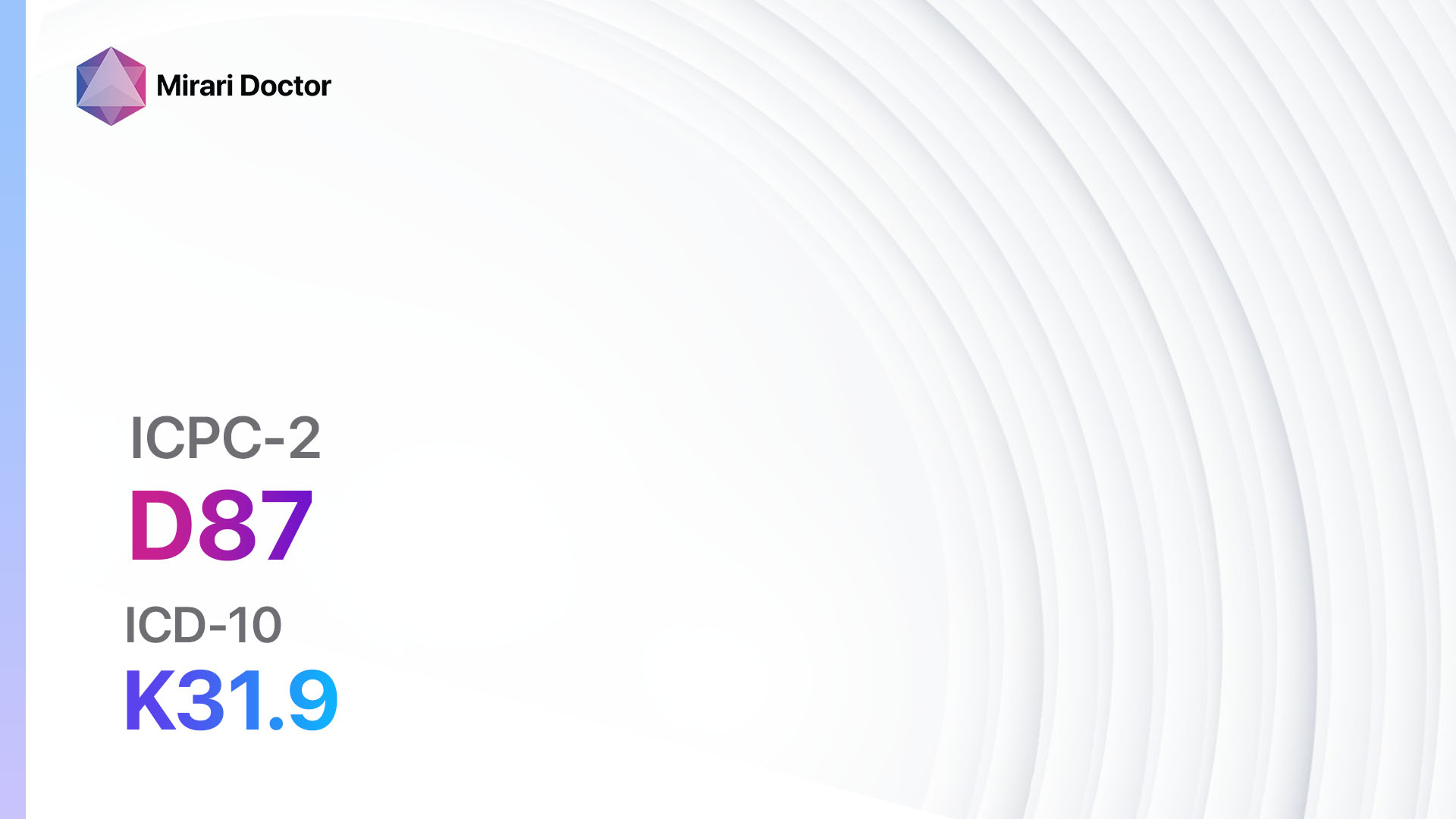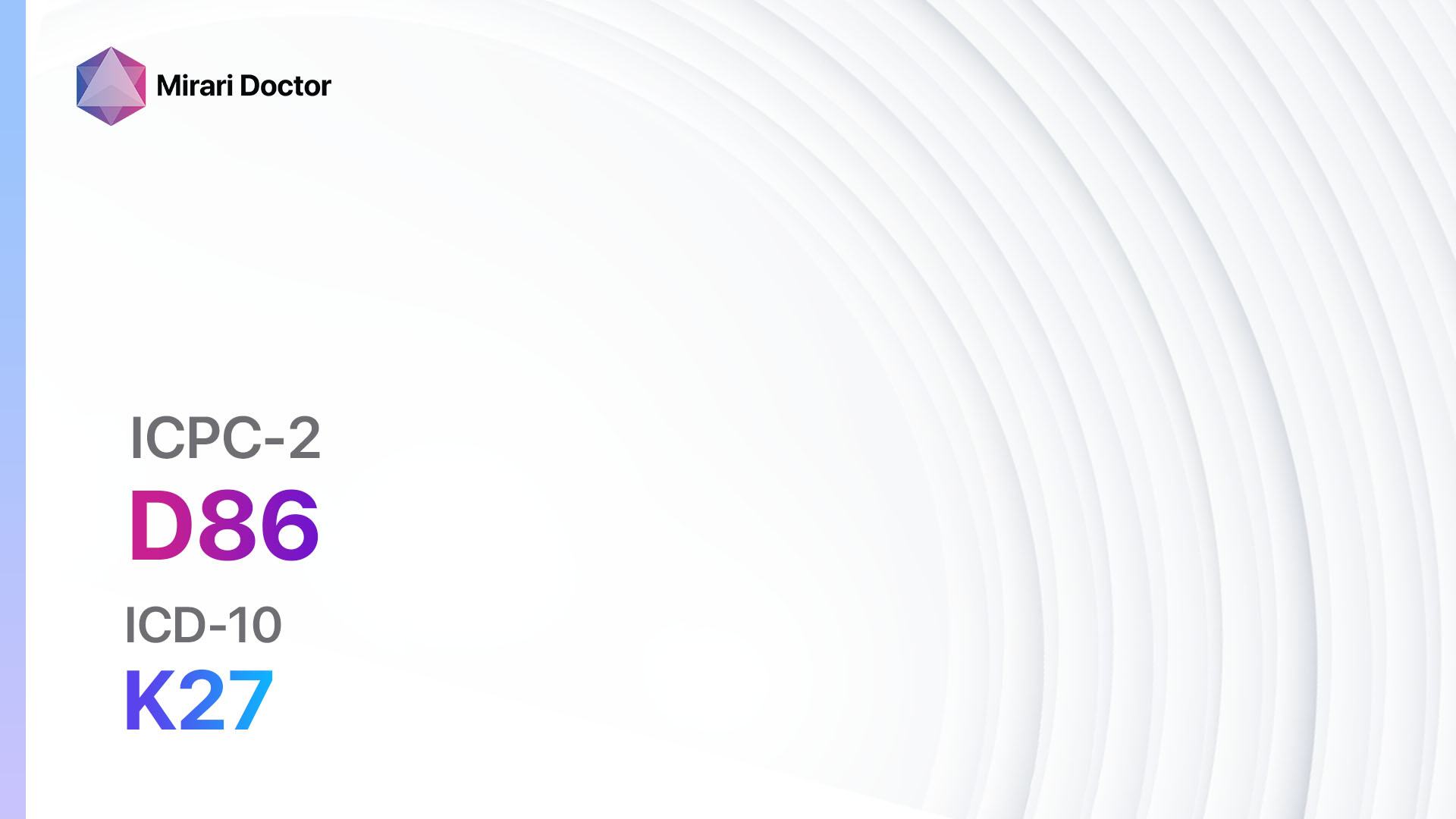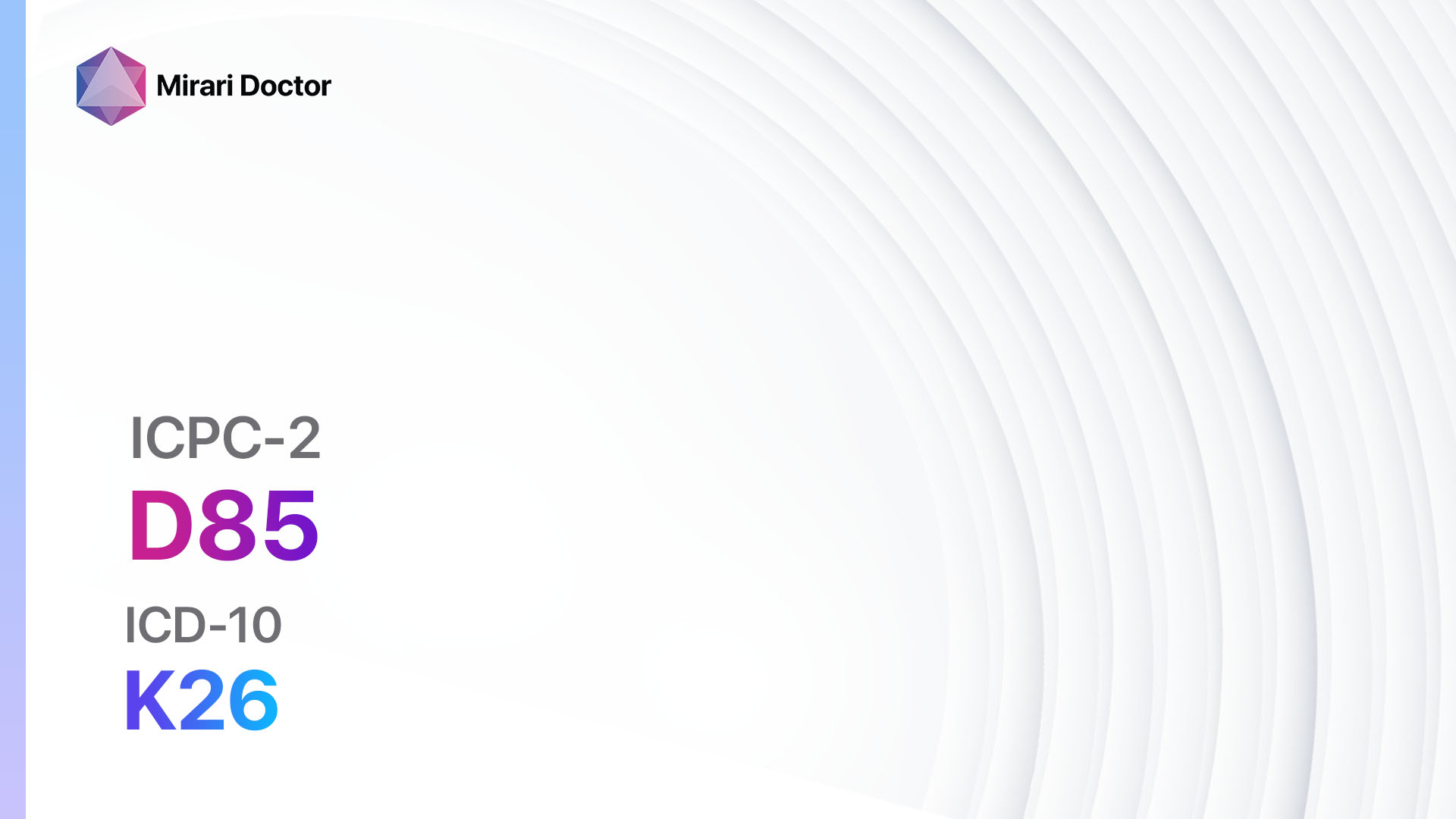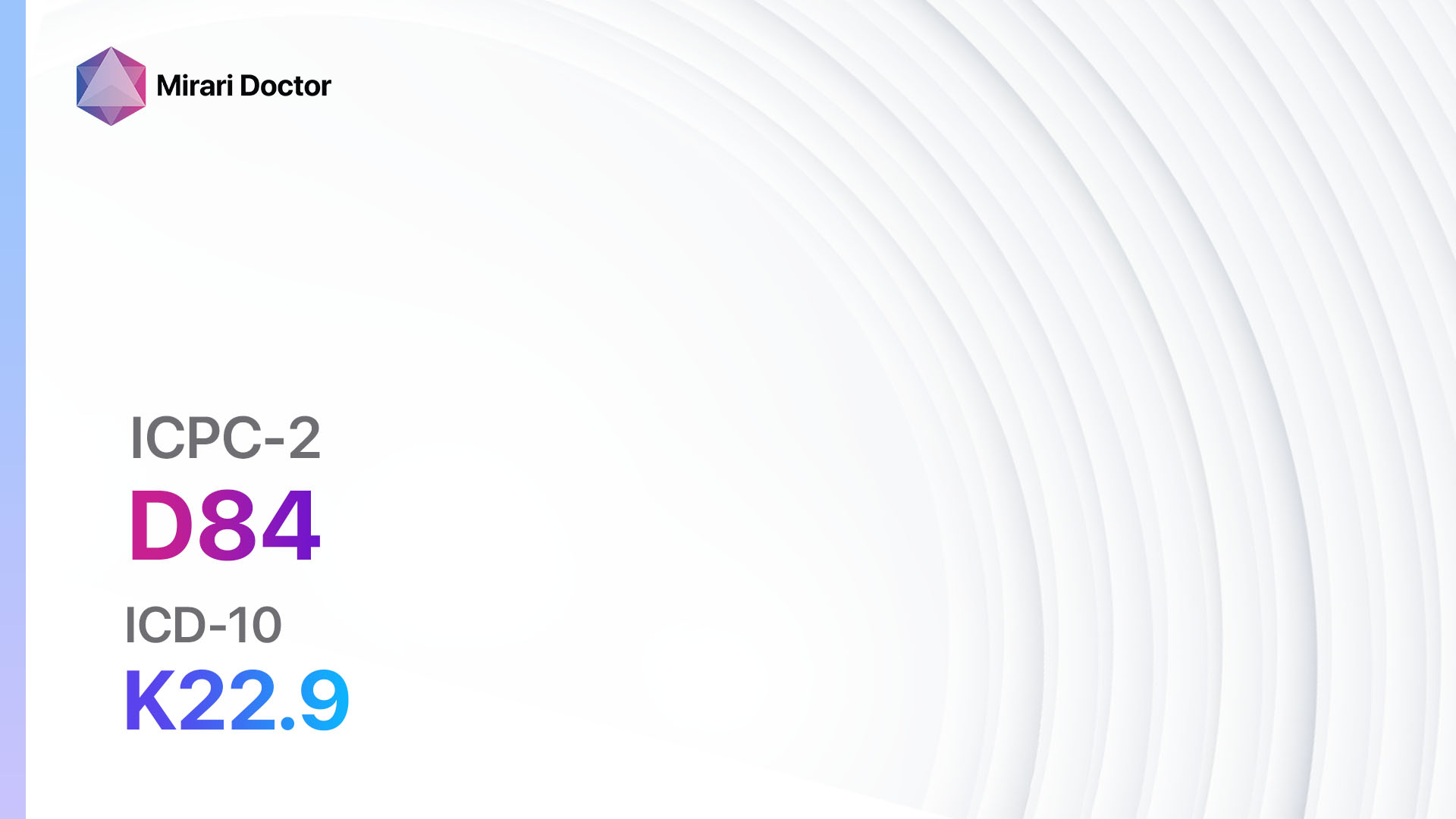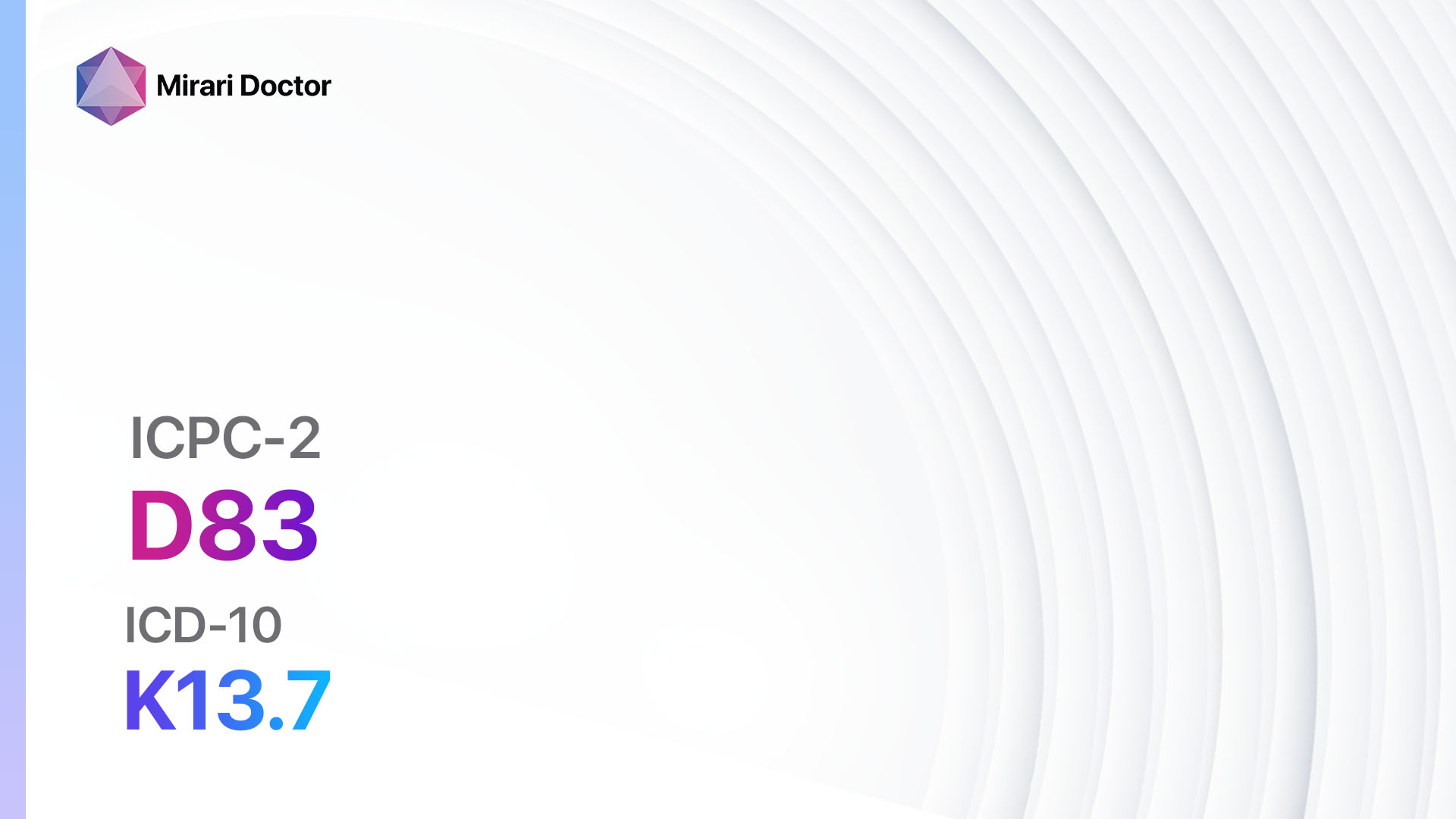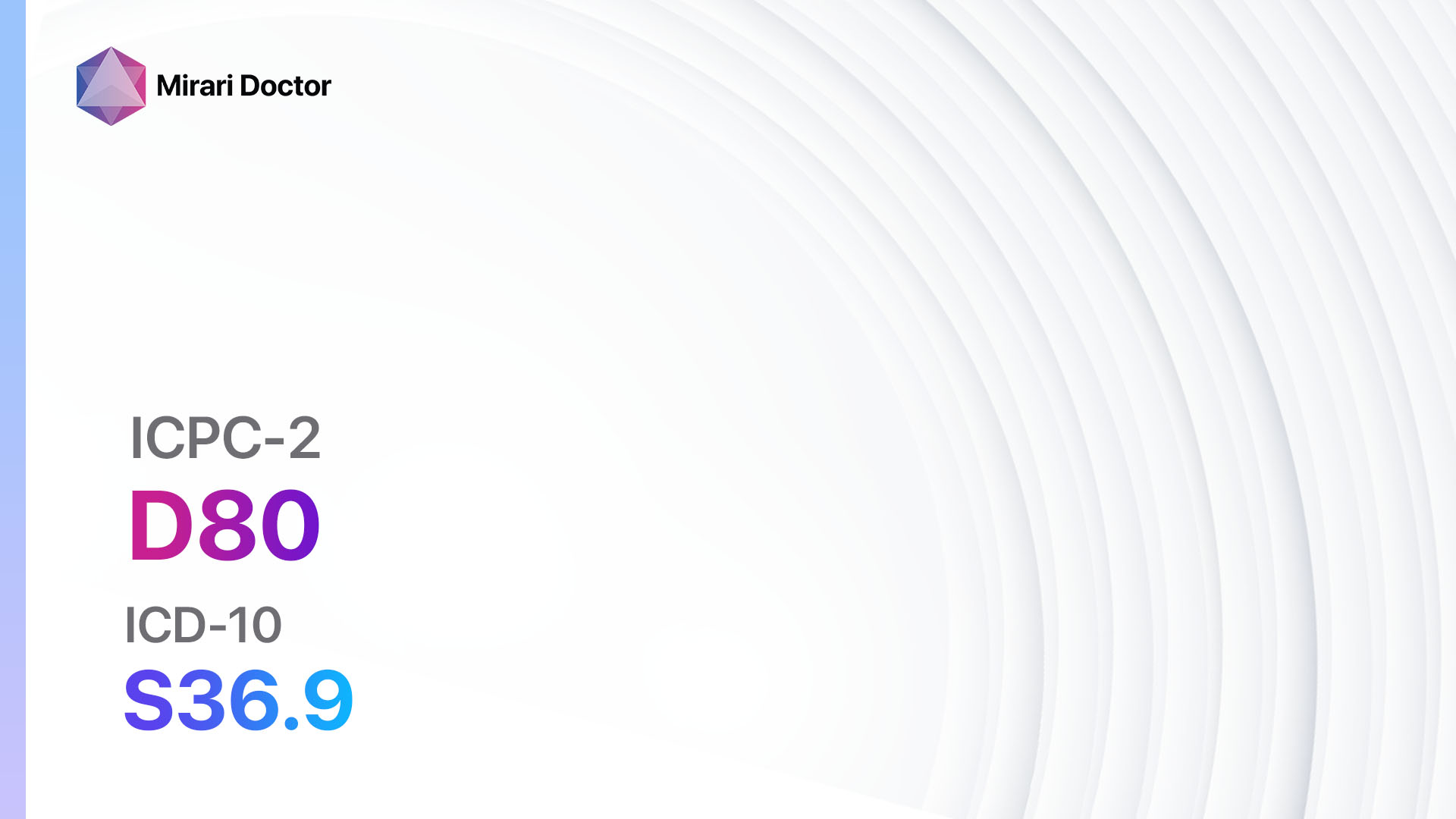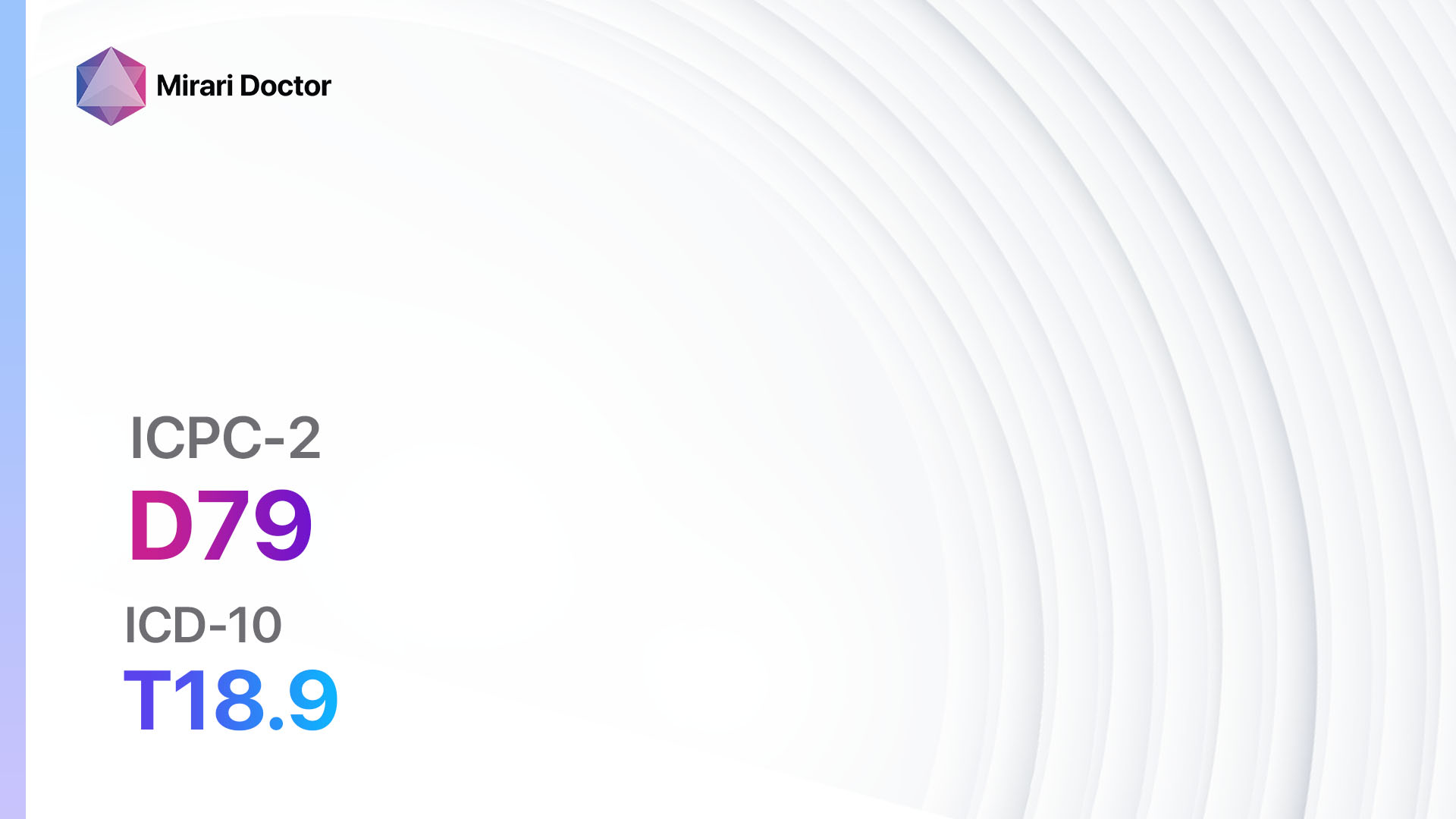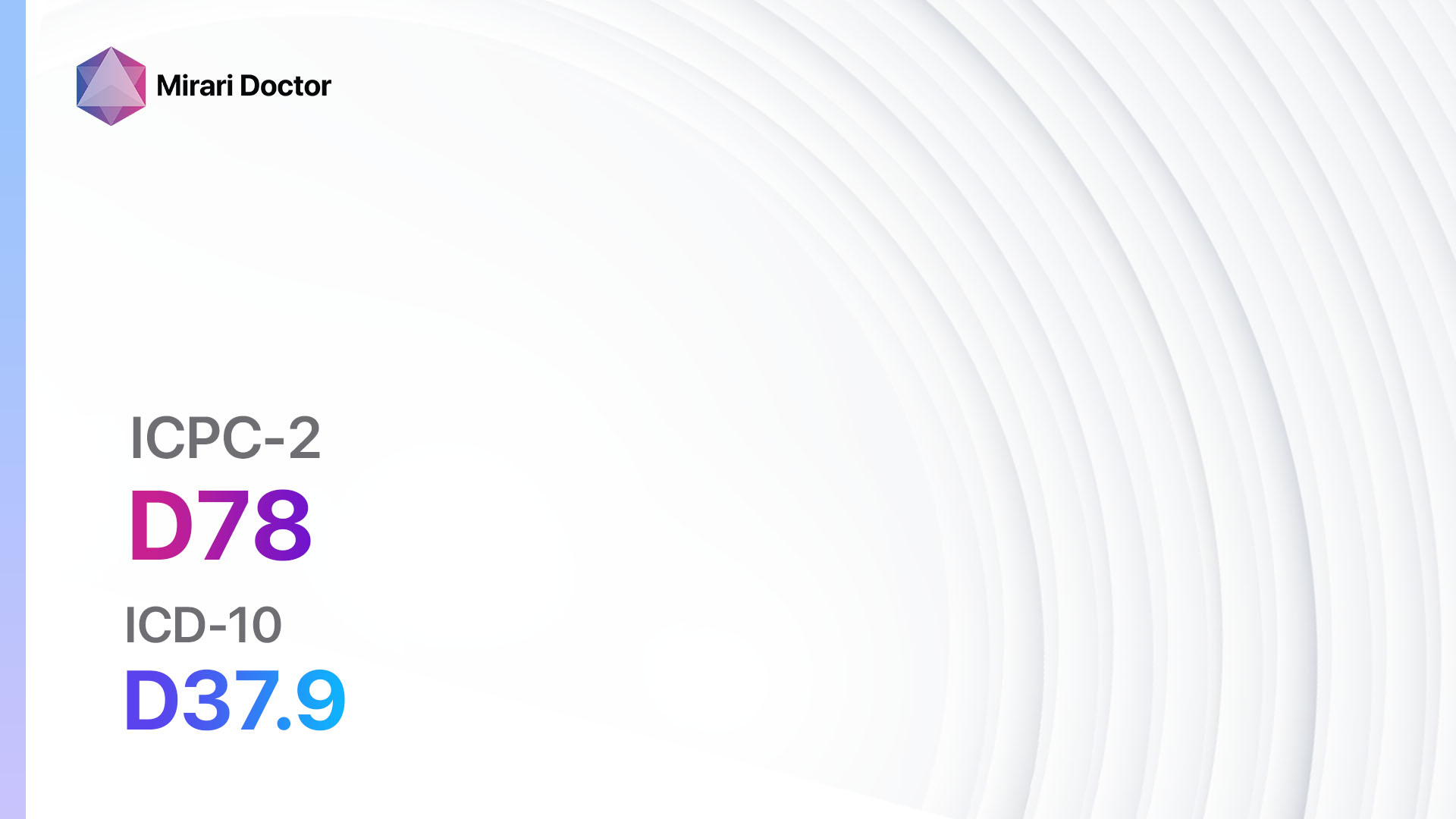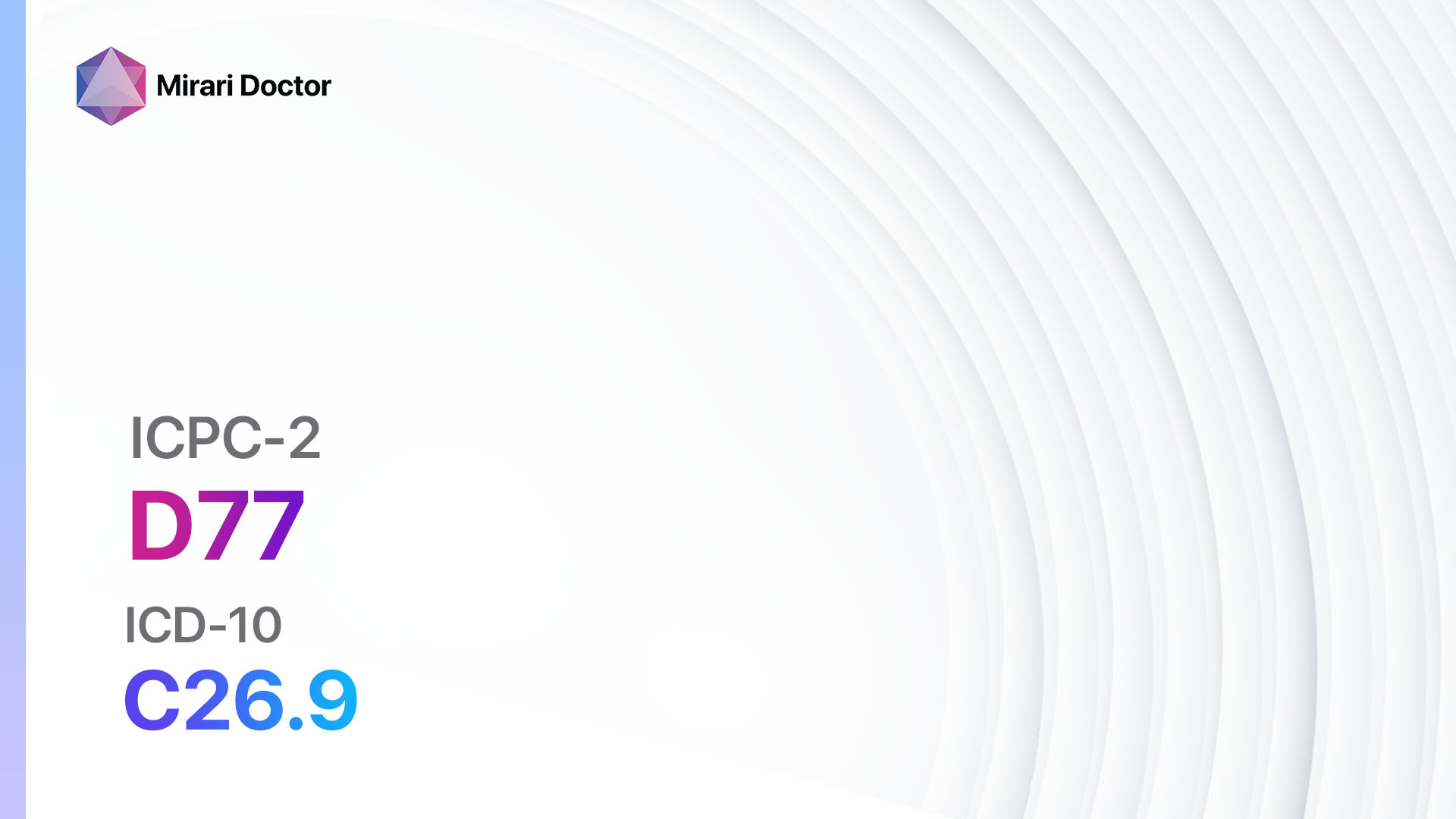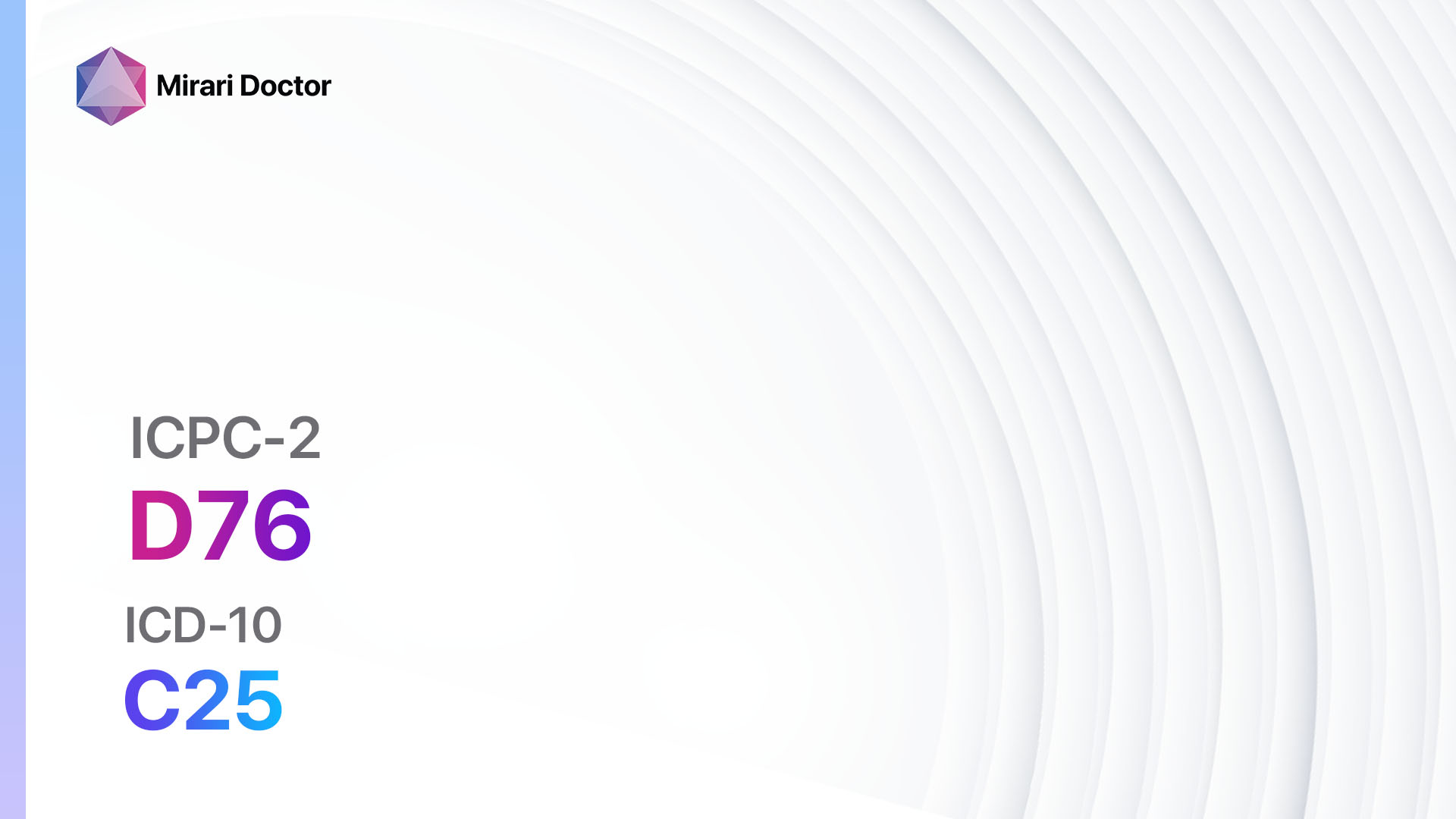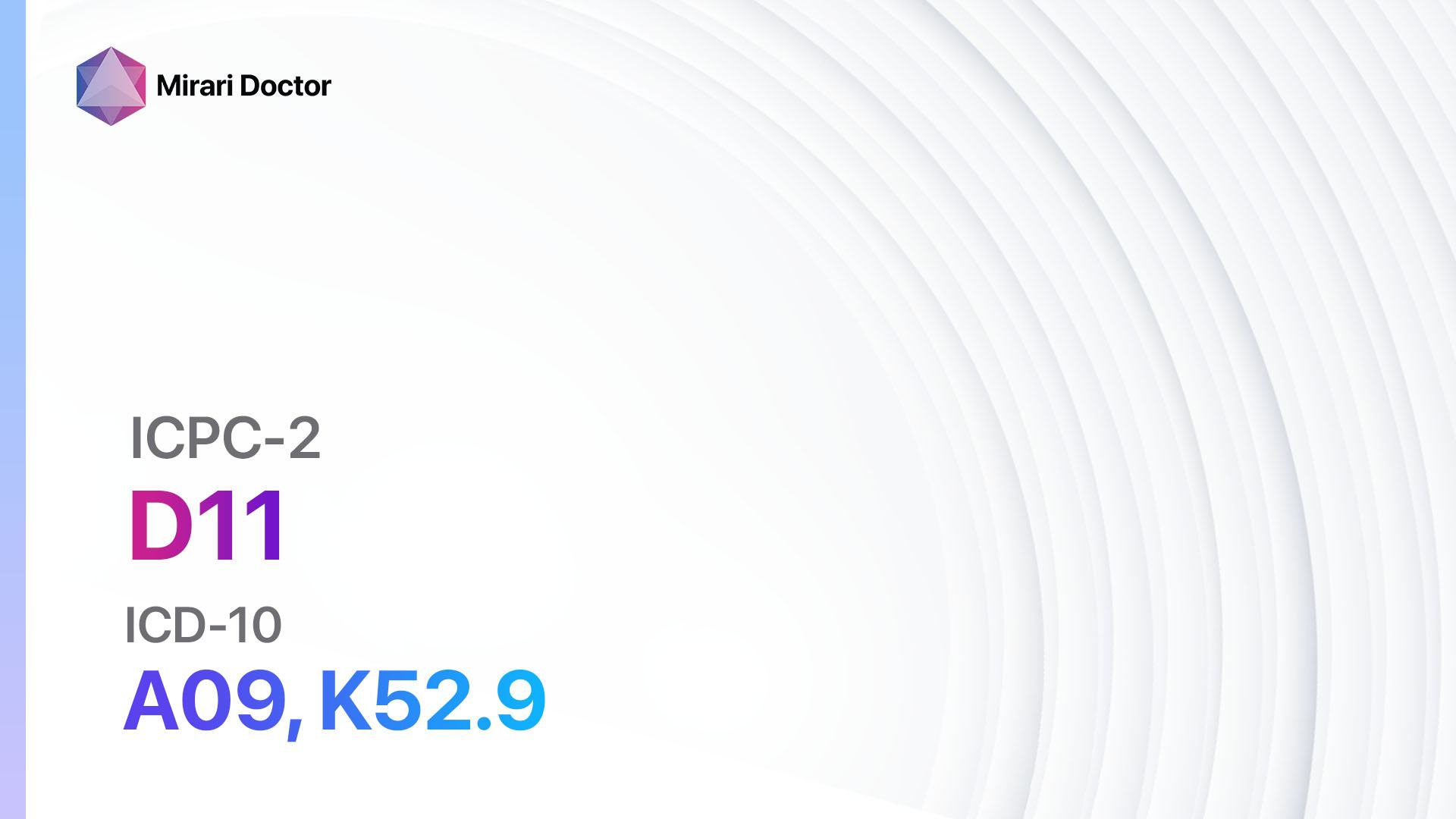
Introduction
Diarrhoea is a common condition characterized by frequent loose or watery stools[1]. It can be caused by various factors, including infections, food intolerances, medications, and underlying medical conditions[2]. The aim of this guide is to provide healthcare professionals with a comprehensive overview of the diagnostic steps and possible interventions for managing diarrhoea.
Codes
- ICPC-2 Code: D11 Diarrhoea[4]
- ICD-10 Code: A09 Other gastroenteritis and colitis of infectious and unspecified origin[5],[6], K52.9 Noninfective gastroenteritis and colitis, unspecified[7],[8]
Symptoms
- Frequent loose or watery stools[1]
- Abdominal cramps or pain[9]
- Bloating
- Nausea or vomiting
- Fever (in some cases)[9]
- Blood in the stool (in severe cases)[9]
Causes
-
- Infections (bacterial, viral, or parasitic)[2],[9]
- Food intolerances or allergies[2]
- Medications (such as antibiotics or laxatives)[2]
- Inflammatory bowel disease (such as Crohn’s disease or ulcerative colitis)[2]
- Irritable bowel syndrome[2]
- Malabsorption disorders (such as celiac disease or lactose intolerance)[2]
Diagnostic Steps
Medical History
- Gather information about the onset and duration of diarrhoea symptoms[9]
- Ask about recent travel, consumption of contaminated food or water, or exposure to sick individuals[9]
- Inquire about any recent changes in diet or medication use[9]
- Assess for any underlying medical conditions or risk factors medication use[9]
Physical Examination
- Perform a thorough abdominal examination to assess for tenderness, distension, or abnormal bowel sounds[9]
- Check for signs of dehydration, such as dry mouth, decreased skin turgor, or low blood pressure[9]
- Evaluate for any signs of infection, such as fever or enlarged lymph nodes[9]
Laboratory Tests
- Stool culture: To identify any bacterial or parasitic infections[9]
- Stool antigen tests: To detect specific pathogens, such as Clostridium difficile or Giardia lamblia[9]
- Blood tests: To assess for signs of infection, inflammation, or malabsorption[9]
- Electrolyte panel: To evaluate for any imbalances due to fluid loss[9]
Diagnostic Imaging
- Abdominal X-ray: To rule out any bowel obstruction or other structural abnormalities[9]
- Abdominal ultrasound: To assess the gallbladder, liver, and other abdominal organs for any abnormalities[9]
- CT scan: To obtain detailed images of the abdomen and pelvis, if necessary[9]
Other Tests
- Colonoscopy: To visualize the colon and obtain biopsies for further evaluation, if inflammatory bowel disease is suspected[9]
- Hydrogen breath test: To diagnose lactose intolerance or small intestinal bacterial overgrowth[9]
- Endoscopy: To examine the upper gastrointestinal tract for any abnormalities, if necessary[9]
Follow-up and Patient Education
- Schedule a follow-up appointment to monitor the patient’s progress and adjust treatment if needed[9]
- Provide education on proper hand hygiene and food safety practices to prevent future episodes of diarrhoea[9]
- Advise the patient to maintain adequate hydration by drinking plenty of fluids and avoiding caffeine and alcohol[9]
- Discuss the importance of a balanced diet and avoiding trigger foods that may worsen diarrhoea symptoms[9]
Possible Interventions
Traditional Interventions
Medications:
Top 5 drugs for Diarrhoea:
- Loperamide (Imodium):
- Cost: $5-$15 for a pack of 24 tablets.
- Contraindications: Allergy to loperamide, bloody or black stools, high fever.
- Side effects: Constipation, dizziness, dry mouth.
- Severe side effects: Severe allergic reactions, severe abdominal pain.
- Drug interactions: Quinidine, ritonavir, saquinavir.
- Warning: Do not exceed the recommended dose or use for more than 2 days without medical advice.
- Bismuth subsalicylate (Pepto-Bismol):
- Cost: $5-$10 for a bottle of liquid or pack of tablets.
- Contraindications: Allergy to salicylates, bleeding disorders, children under 12 years old.
- Side effects: Darkening of the tongue or stool, constipation.
- Severe side effects: Reye’s syndrome (in children with viral infections).
- Drug interactions: Aspirin, blood thinners.
- Warning: Do not use for more than 2 days without medical advice.
- Probiotics (e.g., Lactobacillus acidophilus, Bifidobacterium):
- Cost: $10-$30 for a bottle of capsules or powder.
- Contraindications: Allergy to probiotics, severely immunocompromised individuals.
- Side effects: Gas, bloating, mild stomach upset.
- Severe side effects: Invasive infections (rare).
- Drug interactions: None reported.
- Warning: Choose a reputable brand and follow the recommended dosage.
- Antibiotics (e.g., Ciprofloxacin, Azithromycin):
- Cost: Varies depending on the specific antibiotic and dosage.
- Contraindications: Allergy to the antibiotic, pregnancy (in some cases).
- Side effects: Nausea, vomiting, diarrhea (in some cases).
- Severe side effects: Severe allergic reactions, tendon rupture (with fluoroquinolones).
- Drug interactions: Warfarin, antacids.
- Warning: Antibiotics should only be used if there is evidence of bacterial infection.
- Anti-diarrheal agents (e.g., Diphenoxylate-atropine, Codeine):
- Cost: Varies depending on the specific medication and dosage.
- Contraindications: Allergy to the medication, severe liver disease, respiratory depression.
- Side effects: Drowsiness, dizziness, constipation.
- Severe side effects: Severe allergic reactions, paralytic ileus.
- Drug interactions: MAO inhibitors, alcohol.
- Warning: Use with caution in elderly patients and those with a history of substance abuse.
Alternative Drugs:
- Activated charcoal: May help absorb toxins and reduce diarrhoea symptoms. Cost: $10-$20 for a bottle of capsules or powder.
- Psyllium husk: A natural fiber supplement that can help bulk up stools. Cost: $10-$20 for a bottle of capsules or powder.
- Lactase supplements: Useful for individuals with lactose intolerance. Cost: $10-$20 for a bottle of tablets or drops.
- Antispasmodic agents (e.g., Dicyclomine, Hyoscyamine): Can help relieve abdominal cramps. Cost: $10-$30 for a pack of tablets or capsules.
- Anti-inflammatory agents (e.g., Mesalamine, Sulfasalazine): Used for inflammatory bowel disease. Cost: Varies depending on the specific medication and dosage.
Surgical Procedures:
In most cases, surgical intervention is not necessary for the treatment of diarrhoea. However, if an underlying condition, such as inflammatory bowel disease or bowel obstruction, is identified, surgery may be required. The cost of surgical procedures can vary significantly depending on the specific procedure, hospital, and location.
Alternative Interventions
- Probiotics: May help restore the balance of gut bacteria and reduce diarrhoea symptoms. Cost: $10-$30 for a bottle of capsules or powder.
- Herbal remedies: Some herbs, such as peppermint, chamomile, or ginger, may have anti-inflammatory or soothing effects on the digestive system. Cost: Varies depending on the specific herb and form (tea, capsules, etc.).
- Acupuncture: May help regulate bowel function and reduce diarrhoea symptoms. Cost: $60-$120 per session.
- Elimination diet: Involves removing potential trigger foods from the diet to identify and avoid food intolerances. Cost: Varies depending on the specific dietary changes.
- Stress management techniques: Stress can worsen diarrhoea symptoms, so techniques such as meditation, yoga, or deep breathing exercises may be helpful. Cost: Varies depending on the specific technique (some resources may be available for free).
Lifestyle Interventions
- Maintain good hygiene practices, including regular handwashing with soap and water.
- Drink plenty of fluids, such as water, clear broths, or electrolyte solutions, to prevent dehydration.
- Avoid caffeine, alcohol, and spicy or fatty foods that may irritate the digestive system.
- Eat small, frequent meals and chew food thoroughly to aid digestion.
- Keep a food diary to identify and avoid trigger foods that may worsen diarrhoea symptoms.
It is important to note that the cost ranges provided are approximate and may vary depending on the location and availability of the interventions.
Mirari Cold Plasma Alternative Intervention
Understanding Mirari Cold Plasma
- Safe and Non-Invasive Treatment: Mirari Cold Plasma is a safe and non-invasive treatment option for various skin conditions. It does not require incisions, minimizing the risk of scarring, bleeding, or tissue damage.
- Efficient Extraction of Foreign Bodies: Mirari Cold Plasma facilitates the removal of foreign bodies from the skin by degrading and dissociating organic matter, allowing easier access and extraction.
- Pain Reduction and Comfort: Mirari Cold Plasma has a local analgesic effect, providing pain relief during the treatment, making it more comfortable for the patient.
- Reduced Risk of Infection: Mirari Cold Plasma has antimicrobial properties, effectively killing bacteria and reducing the risk of infection.
- Accelerated Healing and Minimal Scarring: Mirari Cold Plasma stimulates wound healing and tissue regeneration, reducing healing time and minimizing the formation of scars.
Mirari Cold Plasma Prescription
Video instructions for using Mirari Cold Plasma Device – D11 Diarrhoea (ICD-10:A09, K52.9)
| Mild | Moderate | Severe |
| Mode setting: 1 (Infection) Location: 3 (Kidney, Liver & Spleen) Morning: 15 minutes, Evening: 15 minutes |
Mode setting: 1 (Infection) Location: 3 (Kidney, Liver & Spleen) Morning: 30 minutes, Lunch: 30 minutes, Evening: 30 minutes |
Mode setting: 1 (Infection) Location: 3 (Kidney, Liver & Spleen) Morning: 30 minutes, Lunch: 30 minutes, Evening: 30 minutes |
| Mode setting: 2 (Wound Healing) Location: 3 (Kidney, Liver & Spleen) Morning: 15 minutes, Evening: 15 minutes |
Mode setting: 2 (Wound Healing) Location: 3 (Kidney, Liver & Spleen) Morning: 30 minutes, Lunch: 30 minutes, Evening: 30 minutes |
Mode setting: 2 (Wound Healing) Location: 3 (Kidney, Liver & Spleen) Morning: 30 minutes, Lunch: 30 minutes, Evening: 30 minutes |
| Mode setting: 7 (Immunotherapy) Location: 1 (Sacrum) Morning: 15 minutes, Evening: 15 minutes |
Mode setting: 7 (Immunotherapy) Location: 1 (Sacrum) Morning: 30 minutes, Lunch: 30 minutes, Evening: 30 minutes |
Mode setting: 7 (Immunotherapy) Location: 1 (Sacrum) Morning: 30 minutes, Lunch: 30 minutes, Evening: 30 minutes |
| Total Morning: 45 minutes approx. $7.50 USD, Evening: 45 minutes approx. $7.50 USD |
Total Morning: 90 minutes approx. $15 USD, Lunch: 90 minutes approx. $15 USD, Evening: 90 minutes approx. $15 USD, |
Total Morning: 90 minutes approx. $15 USD, Lunch: 90 minutes approx. $15 USD, Evening: 90 minutes approx. $15 USD, |
| Usual treatment for 7-60 days approx. $105 USD – $900 USD | Usual treatment for 6-8 weeks approx. $1,890 USD – $2,520 USD |
Usual treatment for 3-6 months approx. $4,050 USD – $8,100 USD
|
 |
|
Use the Mirari Cold Plasma device to treat Diarrhoea effectively.
WARNING: MIRARI COLD PLASMA IS DESIGNED FOR THE HUMAN BODY WITHOUT ANY ARTIFICIAL OR THIRD PARTY PRODUCTS. USE OF OTHER PRODUCTS IN COMBINATION WITH MIRARI COLD PLASMA MAY CAUSE UNPREDICTABLE EFFECTS, HARM OR INJURY. PLEASE CONSULT A MEDICAL PROFESSIONAL BEFORE COMBINING ANY OTHER PRODUCTS WITH USE OF MIRARI[10].
Step 1: Cleanse the Skin
- Start by cleaning the affected area of the skin with a gentle cleanser or mild soap and water. Gently pat the area dry with a clean towel.
Step 2: Prepare the Mirari Cold Plasma device
- Ensure that the Mirari Cold Plasma device is fully charged or has fresh batteries as per the manufacturer’s instructions. Make sure the device is clean and in good working condition.
- Switch on the Mirari device using the power button or by following the specific instructions provided with the device.
- Some Mirari devices may have adjustable settings for intensity or treatment duration. Follow the manufacturer’s instructions to select the appropriate settings based on your needs and the recommended guidelines.
Step 3: Apply the Device
- Place the Mirari device in direct contact with the affected area of the skin. Gently glide or hold the device over the skin surface, ensuring even coverage of the area experiencing.
- Slowly move the Mirari device in a circular motion or follow a specific pattern as indicated in the user manual. This helps ensure thorough treatment coverage.
Step 4: Monitor and Assess:
- Keep track of your progress and evaluate the effectiveness of the Mirari device in managing your Diarrhoea. If you have any concerns or notice any adverse reactions, consult with your health care professional.
Note
This guide is for informational purposes only and should not replace the advice of a medical professional. Always consult with your healthcare provider or a qualified medical professional for personal advice, diagnosis, or treatment. Do not solely rely on the information presented here for decisions about your health. Use of this information is at your own risk. The authors of this guide, nor any associated entities or platforms, are not responsible for any potential adverse effects or outcomes based on the content.
Mirari Cold Plasma System Disclaimer
- Purpose: The Mirari Cold Plasma System is a Class 2 medical device designed for use by trained healthcare professionals. It is registered for use in Thailand and Vietnam. It is not intended for use outside of these locations.
- Informational Use: The content and information provided with the device are for educational and informational purposes only. They are not a substitute for professional medical advice or care.
- Variable Outcomes: While the device is approved for specific uses, individual outcomes can differ. We do not assert or guarantee specific medical outcomes.
- Consultation: Prior to utilizing the device or making decisions based on its content, it is essential to consult with a Certified Mirari Tele-Therapist and your medical healthcare provider regarding specific protocols.
- Liability: By using this device, users are acknowledging and accepting all potential risks. Neither the manufacturer nor the distributor will be held accountable for any adverse reactions, injuries, or damages stemming from its use.
- Geographical Availability: This device has received approval for designated purposes by the Thai and Vietnam FDA. As of now, outside of Thailand and Vietnam, the Mirari Cold Plasma System is not available for purchase or use.
References
- RxReasoner. (n.d.). ICPC-2 Code: D11 Diarrhoea. Retrieved from https://www.rxreasoner.com/icpc2codes/D11
- Centers for Disease Control and Prevention. (2022, May 16). Diarrheal Diseases. Retrieved from https://www.cdc.gov/healthywater/disease/diarrheal-disease.html
- BMJ Open. (2017). ICPC2 code ICPC2 text Checklist D01 Abdominal pain … – BMJ Open. Retrieved from https://bmjopen.bmj.com/content/bmjopen/7/6/e014636/DC1/embed/inline-supplementary-material-1.pdf?download=true
- Perplexity AI. (n.d.). ICPC-2 Codes – RxReasoner. Retrieved from https://www.rxreasoner.com/icpc2codes/component/S
- Gesund.bund.de. (n.d.). ICD-10 code: A09.0 Other and unspecified gastroenteritis and colitis of infectious origin. Retrieved from https://gesund.bund.de/en/icd-code-search/a09-0
- Gesund.bund.de. (n.d.). ICD-10 code: A09 Other gastroenteritis and colitis of infectious and unspecified origin. Retrieved from https://gesund.bund.de/en/icd-code-search/a09
- Unbound Medicine. (n.d.). K52.9 – Noninfective gastroenteritis and colitis, unspecified. Retrieved from https://www.unboundmedicine.com/icd/view/ICD-10-CM/897635/all/K52_9___Noninfective_gastroenteritis_and_colitis__unspecified
- Gesund.bund.de. (n.d.). ICD-10 code: K52.9 Noninfective gastroenteritis and colitis, unspecified. Retrieved from https://gesund.bund.de/en/icd-code-search/k52-9
- BMJ Open. (2022). ICD-10 code disease diagnosis matched ICPC-2 Code … – BMJ Open. Retrieved from https://bmjopen.bmj.com/content/bmjopen/12/10/e048727/DC1/embed/inline-supplementary-material-1.pdf?download=true
- Riddle, M.S. ; Chen, W.H. ; Kirkwood, C.D. ; MacLennan, C.A. (2018). Update on vaccines for enteric pathogens. DOI: 10.1016/j.cmi.2018.06.023
Related articles
Made in USA


